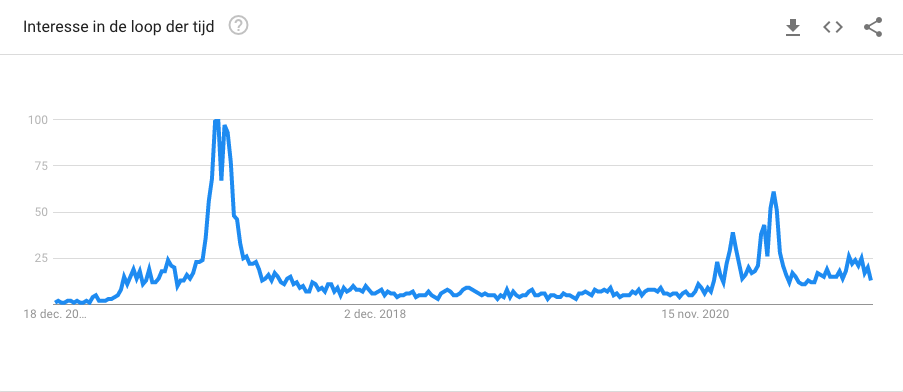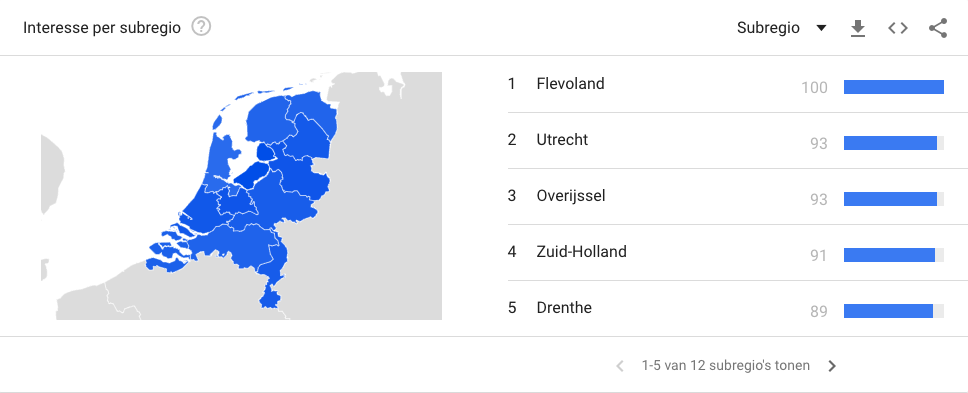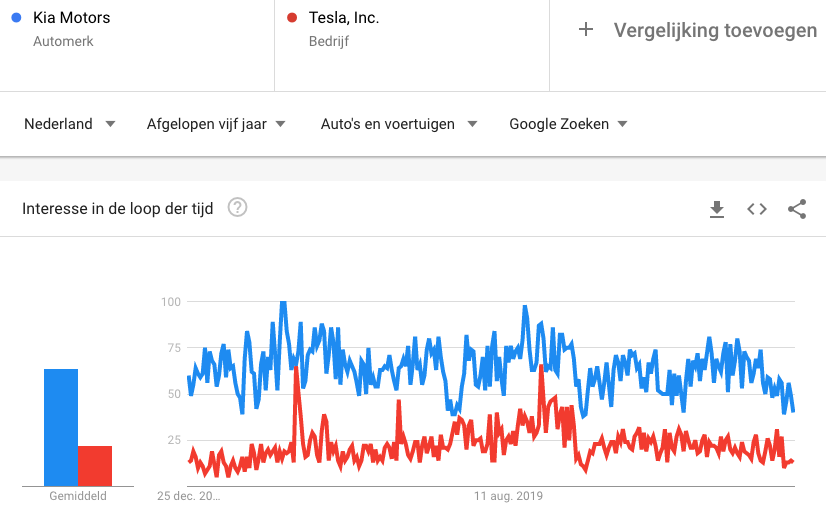

Developing and executing the perfect marketing strategy for your company is difficult. We are happy to give you a helping hand.

A close-knit group of people who breathe the Tilburg atmosphere and have the ambition to always go a step further.


If you work in marketing, Google Trends probably sounds familiar to you. On blogs and in tweets, you occasionally see a screenshot of this tool that exposes the search behavior of Internet users. And annually, Google releases Year in Search: a survey of the most frequently typed search terms. Nice to share, but do you do anything else with it?
In this blog post, we take a close look at Google Trends. You’ll see how to use this tool to discover developments within your niche market. You will also see what seasonal trends are going on with your target audience. With this data, you can put together a content calendar for the coming weeks or even months in a relatively short time.
Google Trends is a free tool from Google that gives you insight into the popularity of keywords. Here you get a chart for a desired period and in a country of your choice, for example, the Netherlands or Belgium. The trend line gives you an idea of how important a search term or topic is to your target audience.

On the Google Trends homepage, you choose how you want to search. If you already have concrete ideas, you can type them into the search bar at the top. If you don’t have one yet, scroll down. You will be shown some examples of possible searches. There is also an overview of the search terms that are currently trending. In fact, Google Trends works in real time.
In the search field, you can type your own search term. If you have your own list of search terms you want to rank for and have not yet written content around one or more search terms, this is a logical approach.
But if you simply want to know what search terms might be interesting for new content, you can also search by topics. You also do that through that search field. Google’s autocomplete feature then comes up with related topics.

As soon as you zoom in on such a subject, you get the well-known graph. Below that are related search terms and topics. You can rank these by ascending. This will give you an overview of the search terms that increased the most in popularity recently. And that in turn is interesting if you’re looking for content ideas.
You can shorten or lengthen the time period to get a better picture of trends. Google also lists regional interest in many countries.

What’s nice about Google Trends is that it allows you to compare two search terms or topics. That way you can see which is most in demand and whether a possible turnaround is coming.

Whereas Google Keyword Planner gives you absolute numbers, Google sticks to relative numbers on a scale of 1 to 100. You can see how a search term currently ranks compared to previous times, or how it compares to another search term. Specifically, you see:
Google Trends, the name says it all, uncovers trends and developments. This is a handy tool for content professionals, but certainly not the only one. In fact, you will often use it in conjunction with Google Keyword Planner or another SEO tool. For as trendy as a search term can be, if search volume is low, it may be smarter to prioritize another search term.
1. Check new trends regularly
Depending on your industry, you could check the latest trends on a monthly or quarterly basis, for example. In doing so, surf plenty of related search terms and topics offered by Google Trends.
2. Shortlist
List the search terms that seem interesting in a spreadsheet. Compare them to each other in Google Trends to see which currently has the biggest momentum. Also, upload the search terms to Google Keyword Planner to see if the absolute numbers show potential.
3. Create content clusters
Especially when you identify an incipient trend, you can make a big deal out of this. If it fits within a larger development, for example artificial intelligence (AI) or the metaverse, you can produce an entire content cluster for this. That’s how you build authority status long before your competitors wake up.
4. Capitalize on seasonal trends
Do you notice a search spike in the same period every year? Then capitalize on these trends by posting relevant content in a timely manner, about two months before that peak. That’s how you will rank for it in time.